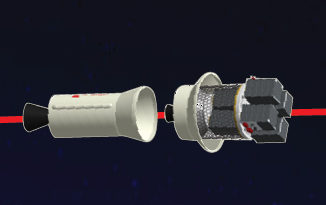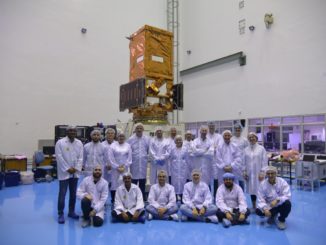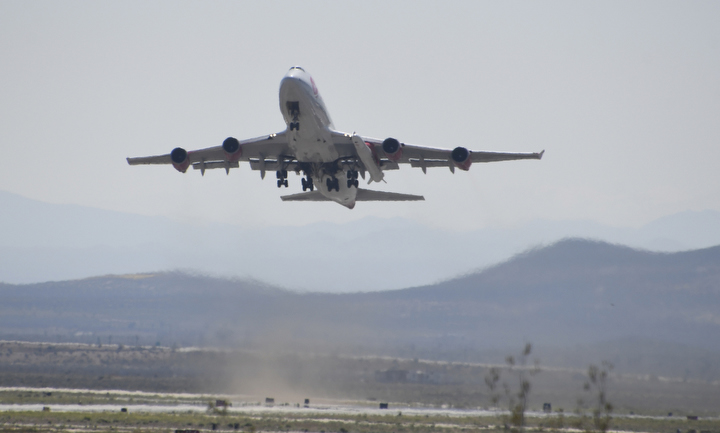
Virgin Orbit could attempt its first orbital test launch later this month over the Pacific Ocean southwest of Los Angeles, capping a development program for an air-launched small satellite carrier that began in earnest eight years ago.
The small satellite launch company, part of Richard Branson’s Virgin Group, entered the final phase of pre-flight testing last week with a ground fueling test of its first flight-worthy LauncherOne rocket.
Dan Hart, Virgin Orbit’s CEO, said the company is on track for the rocket’s first demonstration launch in May.
The LauncherOne rocket is designed to compete with other commercial smallsat launchers, such as Rocket Lab’s Electron booster, for contracts to deliver CubeSats and microsatellites to orbit for commercial customers, the U.S. military and NASA. Virgin Orbit says it can haul up to 660 pounds (300 kilograms) of cargo into a 310-mile-high (500-kilometer) polar sun-synchronous orbit, a standard operating orbit for Earth-imaging satellites.
A dedicated launch by Virgin Orbit sells for around $12 million.
Virgin Orbit completed a cryogenic captive carry test of the LauncherOne rocket April 12, demonstrating the performance of the launch vehicle, its Boeing 747 carrier jet, telemetry and tracking systems, and ground teams. For the captive carry test, Virgin Orbit loaded the two-stage rocket with kerosene fuel, high-pressure gases and super-cold liquid nitrogen to simulate the cryogenic temperature of liquid oxygen, which the LauncherOne vehicle will consume with kerosene during a real launch.
“That was really the capstone test for the development program,” Hart said in a recent interview with Spaceflight Now. “We will do a couple of wet dress rehearsals over the next couple of weeks just to flow LOX (liquid oxygen) through the system and verify any minor tweaks we make to the countdown.
Virgin Orbit announced Friday that one of the two planned wet dress rehearsals was successfully completed.
“We’ll have our mission readiness review and out launch readiness review, and then we’ll be ready to fly,” Hart said.
“We’re a small number of weeks, and it’s really dependent upon, just making sure that there’s nothing in the data that pops up … May is what we’re targeting,” Hart said.
With its headquarters and rocket factory in Long Beach, California, Virgin Orbit was founded in 2017 as a spinoff to Virgin Galactic, Branson’s suborbital space tourism company. Virgin Galactic managed the early years of LauncherOne’s development.
Along with Branson’s Virgin Group, other investors in Virgin Orbit include Aabar Investments, an Abu Dhabi sovereign wealth fund.
During the April 12 captive carry flight, Virgin Orbit’s Boeing 747 carrier jet took off from Mojave Air and Space Port in California’s high desert and flew off the coast. With a four-person crew of pilots and launch support engineers, the jumbo jet flew a race track pattern over the Pacific Ocean before lining up for a simulated launch run west of San Nicolas Island, which is owned by the U.S. Navy.
The targeted drop point is located roughly 100 miles (160 kilometers) west-southwest of Long Beach.
Pilot Kelly Latimer commanded the carrier jet — a modified passenger airliner taken from the fleet of sister company Virgin Atlantic — into climb angle of more than 25 degrees. On a real launch, the nearly 30-ton rocket will be released from a pylon under the 747’s left wing during the pull-up maneuver at an altitude of around 35,000 feet (nearly 10,700 meters).
Four seconds after release, the rocket’s kerosene-fueled NewtonThree engine will ignite with 73,500 pounds of thrust to begin climbing into orbit.
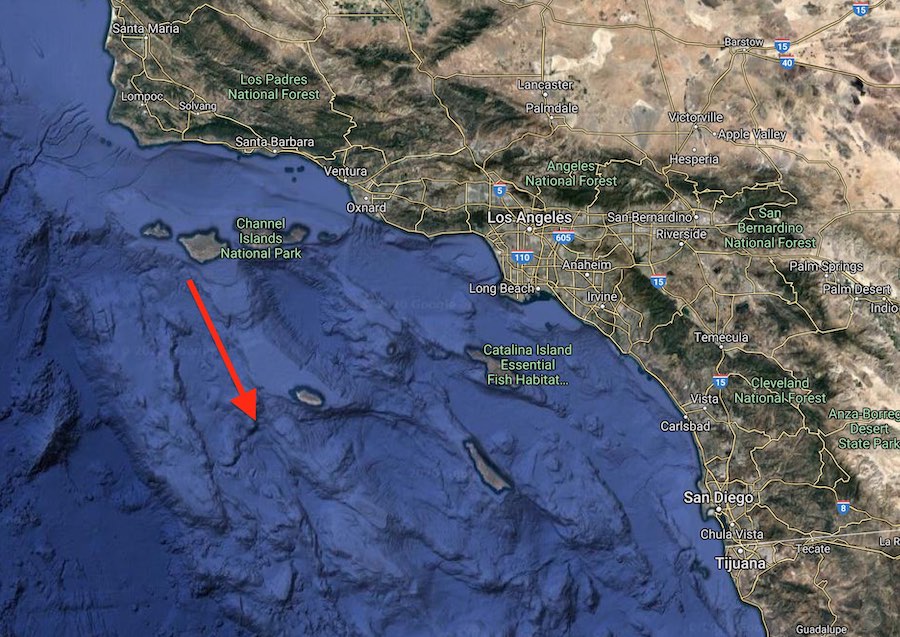
Virgin Orbit is proceeding with the LauncherOne’s debut launch while taking precautions to combat the coronavirus pandemic. At the same time the company readies for the demonstration launch, Virgin Orbit engineers are producing simplified ventilator devices to help patients with moderate cases of the COVID-19 viral disease.
The Food and Drug Administration approved Virgin Orbit’s ventilator design, which was conceived and produced in less than a month, for emergency use April 23. The company said the California Emergency Medical Services Authority ordered a batch of the “bridge ventilators” for potential use in hospitals throughout the state.
In an interview with Spaceflight Now, Hart said Virgin Orbit adjusted the layout of the company’s launch control rooms for the LauncherOne demonstration flight to reduce the chances of exposure to the coronavirus for company employees.
“We have conversations about this every day, and pretty much every week, we either alter course or adjust as we need,” Hart said. “So far, with the provisions that we put in place, we’ve been in pretty good shape. And we’re trying to be leading edge. We monitor our peers in other companies, and what people are doing, what the CDC is advising, what the governor’s office is mandating, but we also look at best practices across businesses.”
Virgin Orbit needs fewer than a dozen technicians and engineers to prepare the 70-foot-long (21-meter) rocket for launch. On launch day, ground teams at Mojave Air and Space Port will connect and disconnect propellant loading lines, perform inspections and complete other tasks before the carrier aircraft — named “Cosmic Girl” — taxi to the runway for takeoff.
“We’ll have 10 who come in periodically to the rocket, during about two different periods of about a half an hour,” Hart said. “We’ll have the aircraft ground crew of roughly four or five people who come in at the key moments when the aircraft needs to taxi out, and then we’ll have the four flight crew, and then me.”
For the first launch, the company will distribute its launch controllers and engineering support team among six rooms in Mojave and at Virgin Orbit’s headquarters in Long Beach. Virgin Orbit also installed dividers between the control consoles.
“Normally, you want eye-to-eye compact,” Hart said. “In this case, dividers are both really beneficial from a health point of view, and it also gives you some peace of mind. We did quite a bit of work on the facility itself. We went from probably two-and-a-half rooms to more like six rooms. Big difference.”
The launch control team has also rehearsed countdown procedures virtually, he said.
“So we ran through countdowns while people were sitting at home, going through nominal and off-nominal ops, and going through the handbook and all our malfunction procedures, so they could get the hang of going through a countdown where you don’t have eye-to-eye contact.”
We’re looking forward to it,” Hart said. “We’re going to stay very focused. Launch, by its very nature, requires a laser focus. Hopefully, COVID doesn’t get us anywhere and we’re able to manage through it in the current modes that we’re in. I’m keeping my eyes peeled. If we see distractions or issues pop up in the environment, we’ll rethink and replan.”
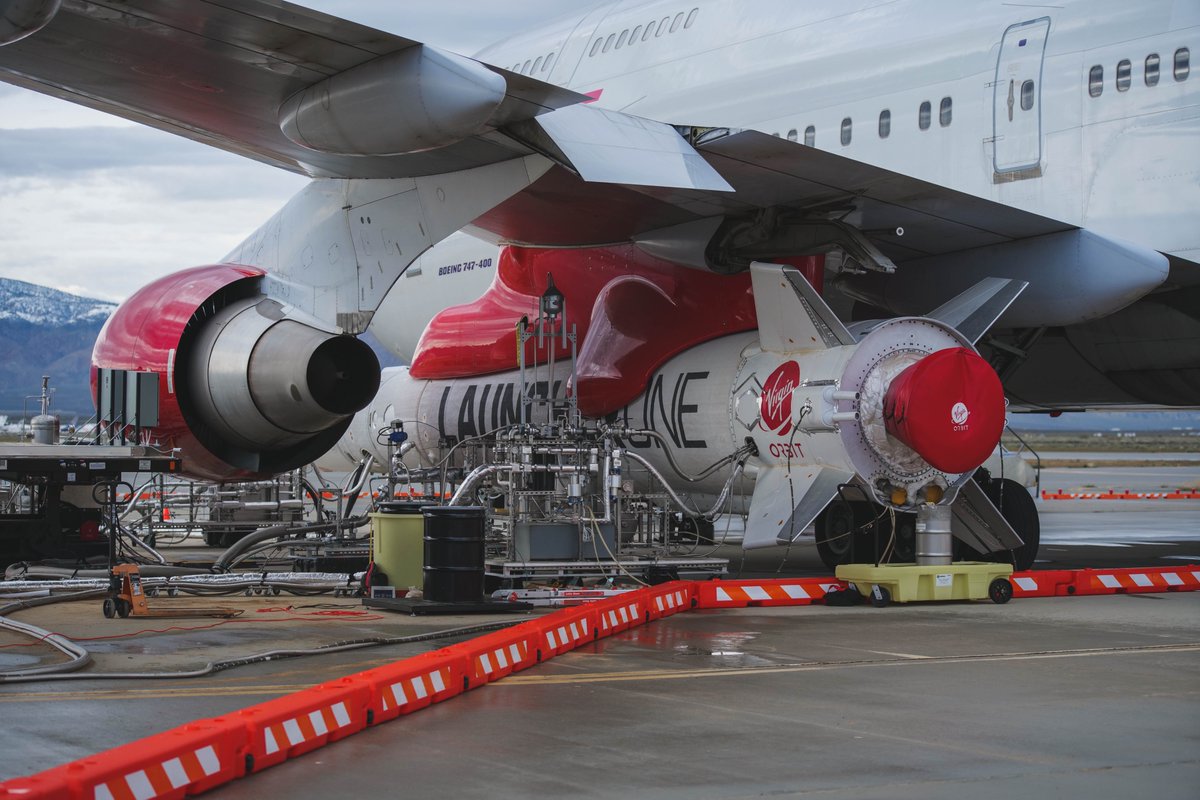
Hart estimated that the work slow-down caused by the company’s initial response to the coronavirus pandemic caused a delay of around three weeks in LauncherOne’s debut test flight.
The successful outcome of the April 12 captive carry test raised confidence in Virgin Orbit’s readiness for the first launch, Hart said.
“The hardware and software performed excellently, just perfectly. But more to the point, the teams and the orchestration of the overall effort went like clockwork,” he said. “We have a ground ops team, we have a mission control team, we have pilots and launch engineers, and of course engineering support. What was really impressive to me was just how well the teams in this new environment, with new communication protocols, how they supported each other and coordinated. It was a beautifully orchestrated day.
“Coming into the day, we had all the parts done,” Hart said. “At the end of the day, we had a launch system.”
Last year, Virgin Orbit completed a series of flights of the carrier jet with a test version of the LauncherOne rocket, culminating in a drop of the inert rocket over Edwards Air Force Base, California. The rocket was filled with water to simulate the weight of a fully-fueled LauncherOne vehicle, and the test unit impacted the ground at Edwards after the 747 pilots command its release.
At the time, the company aimed to perform its first test launch before the end of 2019.
“The areas where programs usually slow down is where components come into systems,” Hart said. “It is very difficult to foresee what complexities or difficulties will appear during those. Whether it’s our first captive carry test last year, or our stage hotfire test, you can’t go through any of those system activities until everything is done, so anything that’s either got a problem, a new analytical result, a component failure, a software problem, any of those at that point stops you.
“Those are the areas where you just have to put your head down with the team and burn through those, foresee as many as you can, and the ones that pop up in the 11th hour, drive through,” he said .”I’m happy to say that the team has had the wherewithal and perseverance and resilience to drive through a ton of those to get us to where we are today.”
Hart said Virgin Orbit has its launch license from the Federal Aviation Administration, which reviewed the company’s planned use of an autonomous flight termination system. The destruct mechanism would be used to terminate the flight if the rocket deviates from its expected trajectory after launch.
For launch tracking, Virgin Orbit will use its own telemetry station at the company’s Long Beach headquarters, along with other telemetry stations in Baja California, Antarctica and Mauritius, Hart said. U.S. military launch range facilities at nearby Vandenberg Air Force Base will not play an active role in the test launch.
“A lot of the focus of this system is the flexibility,” Hart said. “We wanted to … make sure that it was as self-contained as possible and that we weren’t slave to a lot of assets that have a lot of different stakeholders, where you can get stopped and started continually.
“So we’re flying out of Mojave, we have our own telemetry connections, we have autonomous flight termination, we fly over the water, so the sensitivities associated with those are a bit modulated than if you’re starting your rocket flight near a populated area,” Hart said. “And the 747 allows us to go a lot of different directions and go to a lot of different orbits.”
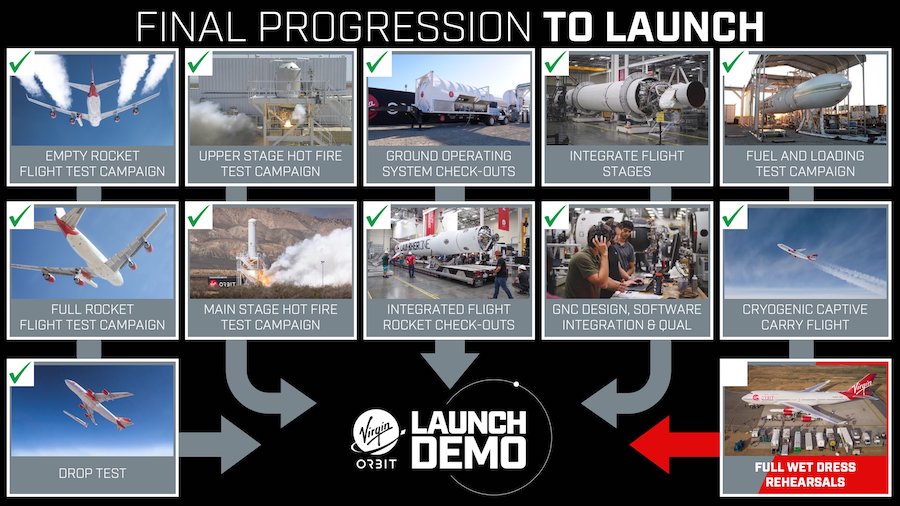
On the inaugural LauncherOne test flight, the rocket will carry Virgin Orbit’s own “test payloads,” Hart said.
“It is an engineering test of the system,” Hart said. “Of course, we would love it to get to orbit. The more of the system that we can exercise, the more confidence that we’ll have for the next flight. We do know, and we’re mindful, that a first flight is not without risk.
“So if we get through captive carry, first stage, into second stage, every single point that we get through closer to orbit, we’ll be verifying huge parts of the system,” he said. “We’re not publishing the exact orbit at this point (for the first flight), but it’s a low Earth orbit, significantly de-rated for this first flight.”
Hart said Virgin Orbit aims to restart the second stage’s NewtonFour engine once in space, validating the rocket’s ability to deliver payloads to different orbits on the same mission.
“We’re planning to exercise the whole system, so we will be restarting the upper stage,” he said. That’s in our plan. We have a payload that, if all goes well, we would deploy.”
Virgin Orbit has not disclosed any details about the payloads to be launched on the rocket’s first flight.
Hart said Virgin Orbit plans to have a chase plane for the launch, and video cameras are mounted on the aircraft and the the LauncherOne vehicle itself to capture the rocket’s release from the carrier jet, first stage ignition and climb into space.
But the company does not plan to provide a live webcast for the LauncherOne demonstration flight. Instead, Virgin Orbit will release updates on social media as the flight progresses, Hart said.
“On this flight, we’ll have updates,” he said. “I don’t think we’ll have continuous video for this first launch. But we’ll be pushing things out as far as how we’re doing in ground processing, where we are in taxiing, and how we’re doing as we go through the flight.”
Hart said Virgin Orbit is looking at producing live video streams for the public on future missions.
“It’s just, for this first one, there’s so much for us to track and get our arms around, it adds another level of complexity that we just didn’t want to get into,” Hart said.
Email the author.
Follow Stephen Clark on Twitter: @StephenClark1.

